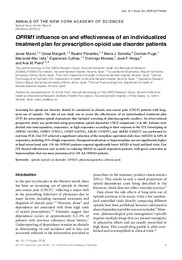Please use this identifier to cite or link to this item:
https://hdl.handle.net/11000/32357Full metadata record
| DC Field | Value | Language |
|---|---|---|
| dc.contributor.author | Muriel, Javier | - |
| dc.contributor.author | Margarit, César | - |
| dc.contributor.author | Planelles, Beatriz | - |
| dc.contributor.author | Serralta, María J. | - |
| dc.contributor.author | Puga, Carmen | - |
| dc.contributor.author | Inda, María del Mar | - |
| dc.contributor.author | Cutillas, Esperanza | - |
| dc.contributor.author | Morales, Domingo | - |
| dc.contributor.author | Horga, José Francisco | - |
| dc.contributor.author | Peiró, Ana | - |
| dc.contributor.other | Departamentos de la UMH::Farmacología, Pediatría y Química Orgánica | es_ES |
| dc.date.accessioned | 2024-06-27T10:57:14Z | - |
| dc.date.available | 2024-06-27T10:57:14Z | - |
| dc.date.created | 2018-08 | - |
| dc.identifier.citation | Annals of the New York Academy Science. 2018 Aug;1425(1):82-93 | es_ES |
| dc.identifier.issn | 1749-6632 | - |
| dc.identifier.issn | 0077-8923 | - |
| dc.identifier.uri | https://hdl.handle.net/11000/32357 | - |
| dc.description.abstract | Screening for opioid use disorder should be considered in chronic non-cancer pain (CNCP) patients with long-term use of opioids. The aim of our study was to assess the effectiveness of an individualized treatment plan (ITP) for prescription opioid dependence that included screening of pharmacogenetic markers. An observational prospective study was performed using prescription opioid-dependent CNCP outpatients (n = 88). Patients were divided into nonresponders, responders, or high responders according to their response to the ITP. Genotyping of OPRM1 (A118G), OPRD1 (T921C), COMT (G472A), ABCB1 (C3435T), and ARRB2 (C8622T) was performed by real-time PCR. Our ITP achieved a significant reduction of the morphine equivalent daily dose (MEDD) in 64% of responders, including 33% of high responders. Nonopioid medication or buprenorphine use was significantly higher at final versus basal visit. 118-AA OPRM1 patients required significantly lower MEDD at basal and final visits. Our ITP showed effectiveness and security in reducing MEDD in opioid-dependent patients, with good conversion to buprenorphine that was more pronounced in 118-AA OPRM1 patients. | es_ES |
| dc.format | application/pdf | es_ES |
| dc.format.extent | 12 | es_ES |
| dc.language.iso | eng | es_ES |
| dc.publisher | Wiley | es_ES |
| dc.rights | info:eu-repo/semantics/openAccess | es_ES |
| dc.rights.uri | http://creativecommons.org/licenses/by-nc-nd/4.0/ | * |
| dc.subject | OPRM1 | es_ES |
| dc.subject | chronic pain | es_ES |
| dc.subject | opioid | es_ES |
| dc.subject | opioid use disorder | es_ES |
| dc.subject | pharmacogenetics | es_ES |
| dc.subject.other | CDU::6 - Ciencias aplicadas::61 - Medicina::615 - Farmacología. Terapéutica. Toxicología. Radiología | es_ES |
| dc.title | OPRM1 influence on and effectiveness of an individualized treatment plan for prescription opioid use disorder patients | es_ES |
| dc.type | info:eu-repo/semantics/article | es_ES |
| dc.relation.publisherversion | https://doi.org/10.1111/nyas.13735 | es_ES |

View/Open:
OPRM1 influence on and effectiveness of an individualized.pdf
371,1 kB
Adobe PDF
Share:
.png)
